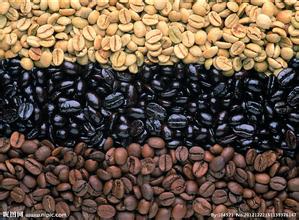How much coffee does a coffee tree produce in a year
The "Yunnan-Vietnam Railway Bar" located at the Yunnan-Vietnam Railway Station is the product of this time.
Although it is called a bar, it actually sells coffee, a practice that originated in France, where cafes are characterized by a mixture of cafes and taverns.
This is just the beginning of the future popularity of coffee.
The "South American Cafe" opened by Vietnamese expatriates here is one of the favorite cafes frequented by students of the United Nations University. it is said that a Vietnamese girl played the solo here, which attracted a lot of admirers. In 1949, when the people's Republic of China was founded, the villagers of Jukula were still growing and drinking coffee. At that time, one jin of coffee could be exchanged for two jin of salt, so the village head Li Fusheng mobilized the villagers to grow coffee in a large area, with coffee trees as much as 60 mu at most.
But apart from exchanging it for salt and supplying it to Binchuan Taihe Farm, Jukula is no longer known to outsiders.
In the 1950s, Liang Jinshan, a patriotic overseas Chinese, returned to his hometown to vigorously promote coffee cultivation, and he also introduced new coffee seedlings from South Asia. With his financial support, Yunnan technicians cultivated a high-yielding Lujiangba small-grain coffee, and he sent samples of his coffee to his old friend he Xiangning, who wrote back: "the coffee tastes excellent. Thank you very much for your hospitality."
In the mid-1950s, the planting area of coffee in Yunnan once reached 4000 hectares. Unfortunately, Sino-Soviet relations broke down after the 1960s, and 4000 mu of coffee plantations were artificially shelved or replanted with other crops.
Until the end of the "Cultural Revolution", only the Yunnan Burma Road roadside, or farm courtyard, can still see the shadow of coffee trees. In the remote village of Jugula, 24 coffee trees planted by missionaries have been preserved for geographical reasons.
The coffee saplings have been sleeping quietly, waiting for those who wake them up.
In the late 1980s, a group of multinational groups settled in Yunnan and finally revived the cultivation of coffee in Yunnan. By the end of 1997, the planting area of coffee in Yunnan had reached 7800 hectares, accounting for 83% of the country's output. During this period, China's rapid economic development, gradually integrated into the global economic system, the small Yunnan coffee beans is the witness.

Important Notice :
前街咖啡 FrontStreet Coffee has moved to new addredd:
FrontStreet Coffee Address: 315,Donghua East Road,GuangZhou
Tel:020 38364473
- Prev

How many days is the shelf life of ripe coffee beans-the shelf life of coffee beans after grinding
How many days is the shelf life of coffee beans? most of the shelf life of coffee beans after grinding is one-way exhaust valve bags lined with aluminum foil. Aluminum foil can block light and air. The function of the one-way exhaust valve is to discharge too much carbon dioxide so that the bag will not burst without opening. The bag is useless when you get the coffee beans. Because once the bean cultivation is finished, there is no need to let it exhaust again.
- Next

How much pressure does it take to make a good coffee-espresso machine?
How much pressure to make coffee is good to drink-Italian coffee machine pressure How much in the coffee machine hardware we often say, the most commonly mentioned is the boiler size and pump (pump) In fact, there are many coffee machines to pay attention to, the design of different pipes of materials will affect the effect of a cup of coffee, this is also responsible manufacturers Why use copper or stainless steel as the main material of the coffee machine. one is
Related
- What brand of black coffee is the most authentic and delicious? what are the characteristics of the flavor of the authentic Rose Summer Black Coffee?
- Introduction to the principle and characteristics of the correct use of mocha pot A detailed course of mocha pot brewing coffee is described in five steps.
- Which is better, decaf or regular coffee? how is decaf made?
- How much is a bag of four cat coffee?
- How about four Cat Coffee or Nestle Coffee? why is it a cheap scam?
- Which is better, Yunnan four Cats Coffee or Nestle Coffee? How about cat coffee? is it a fake scam? why is it so cheap?
- How about Cat Coffee? what grade is a hoax? which instant coffee tastes better, four Cat Coffee, Nestle Coffee or G7 coffee?
- Process flow chart of coffee making-Starbucks coffee making process what coffee tastes good at Starbucks
- The top ten best coffee beans in the world Rose summer coffee or Tanzanian coffee tastes good
- Yunnan four cat coffee is good to drink?_four cat coffee is a big brand? four cat blue mountain coffee is fake?

